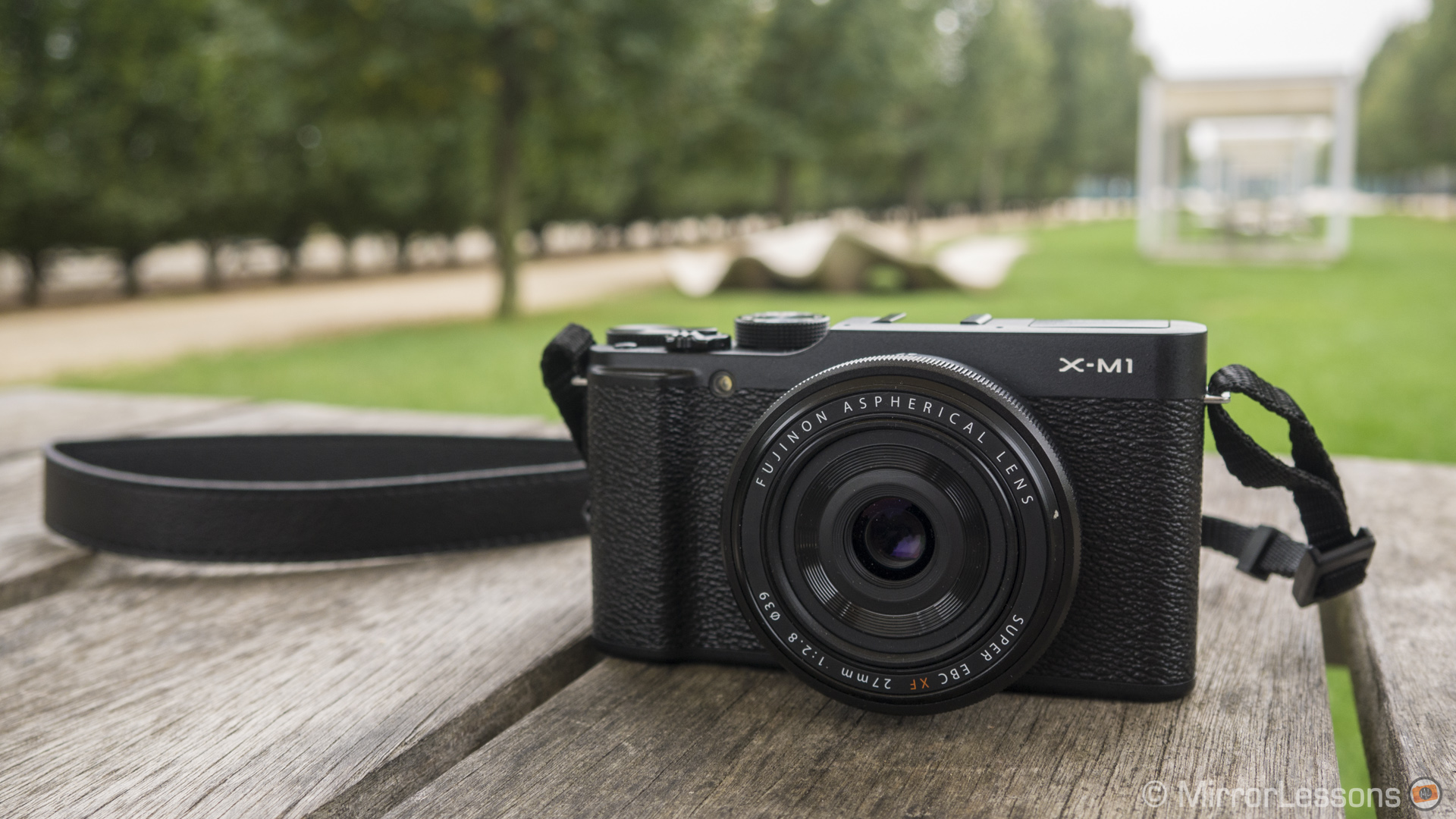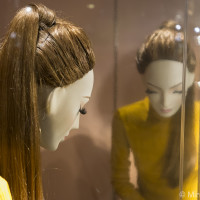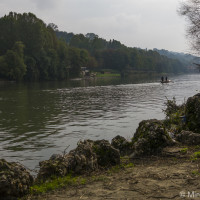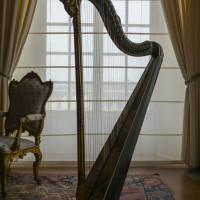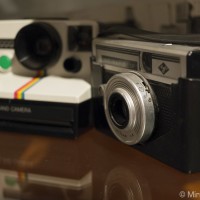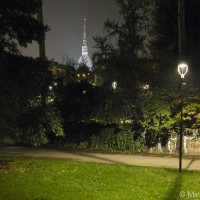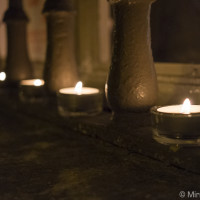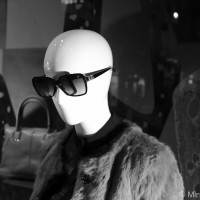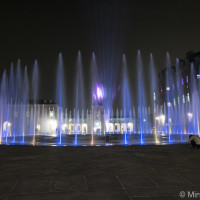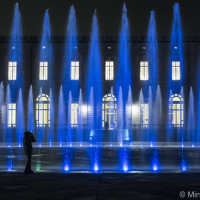The release of the Fujifilm X-M1 marks an important step in the X line for the Japanese firm. Up until now, Fuji has concentrated its efforts on high-end interchangeable lens models such as the X-Pro 1 and high-end compact cameras such as the X100/s and X10/20 line. With the X-M1, Fujifilm has expanded its product line to include low-end mirrorless cameras and puts itself in direct competition with products like the Sony Nex-5/6 series or the Samsung NX300.
At the time of writing this article, the X-A1, Fujifilm’s newest entry level model, has just been announced and the QX1 (same sensor as the X20) is also on the way. Some have criticised Fujifilm for spending more time on cheaper cameras instead of updating their high-end models, but that is going to change soon with the imminent announcement of the X-E2. Also, while the release of all these new models may lead us to think that Fujifilm wants to imitate other brands and saturate the market, in my opinion it is a simple consequence of a company wanting to increase its earnings. Actually, if you think about it, Fuji started the opposite way: the first models were for professionals and advanced enthusiasts and it has now turned its attention to the rest of the market, which of course cannot be ignored.
Simply, what Fujifilm is doing is filling new low-end cameras with technology that has been tried, tested and approved by professionals. I won’t dig more into Fuji’s marketing strategy because it isn’t my domain, but if we are to take anything away from this discussion, it is that the X-M1 may seem like a compromise for many things but not the most important aspect, image quality.
Fuji X-M1 Main Specs
- Sensor: 16.3 million pixels – 23.6mm x 15.6mm (APS-C) X-Trans CMOS
- Lens System: interchangeable lens system – Fujifilm X Mount
- ISO Sensitivity: 200 – 6400, extendable to 100, 12800 and 25600 (JPG only)
- Continuous shooting: max 5.6 fps (JPEG: max. 30 frames, RAW / RAW+JPEG: max. 10 frames)
- Autofocus: TTL contrast AF
- Internal Stabilisation: No (in-lens stabilisation supported with O.I.S. Type lenses)
- Viewfinder: none
- LCD Screen 3.0-inch LCD monitor, approx. 920k dots
- Movie recording: 1920 x 1080 pixels (30fps) with stereo sound
- Picture Profiles: Film Simulation modes
- Water and dust proof: No
- Sensor Cleaner: Yes
- Wifi: yes
- Built-in Flash: Yes
- Extras: Advanced filters, Multiple Exposure modes
- Dimensions: 116.9mm (W) x 66.5mm (H) x 39.0mm (D) / 4.6 in. (W) x 2.6 in. (H) x 1.5 in. (D)
- Weight: Approx. 330g / 11.6 oz. (including battery and memory card)
Image Quality
Or why it isn’t a compromise
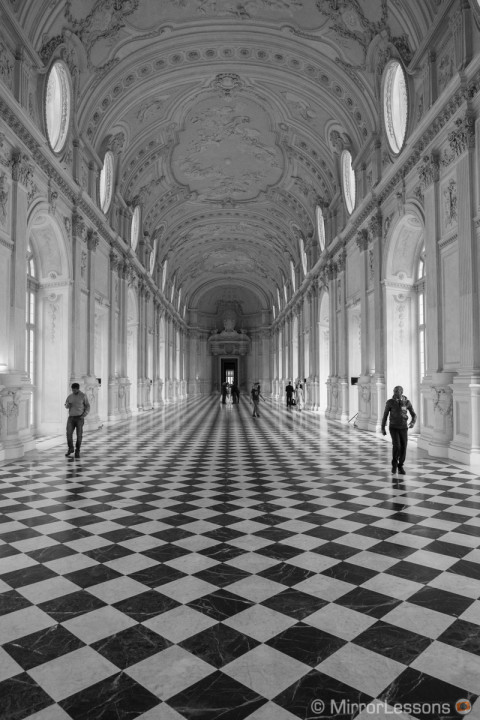
I don’t usually start a review with image quality, but in the case of the X-M1 I’ll break the rules because it is the only aspect I wasn’t curious to test during my time with the camera. Why? Because this cameras has the exact same sensor found in high-end Fuji X cameras such as the X-Pro 1 and the X-E1. For those who already use X cameras, you know what I’m talking about. For those who doesn’t, all you need to know is that this camera features a 16 megapixels X-Trans sensor that will give you:
- Excellent dynamic range
- Film-like colour rendition
- Amazing performance at high ISO with pleasant “organic” noise
I must say that testing a camera you already know will have great image quality gives you a lot of confidence. You know you can trust it from the moment you press the ‘on’ button.
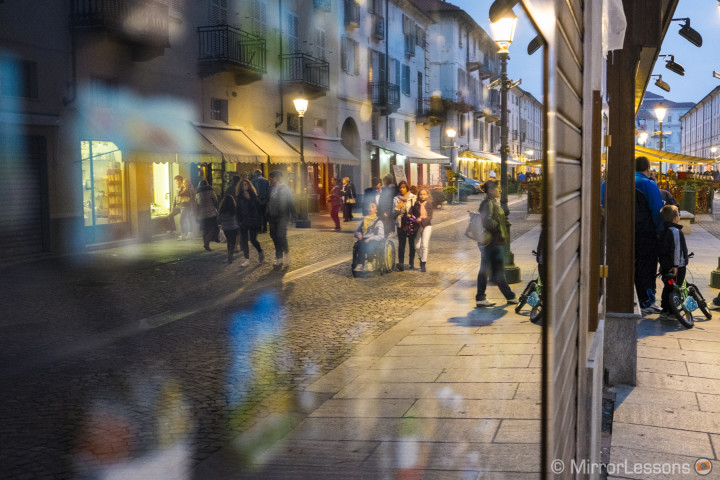
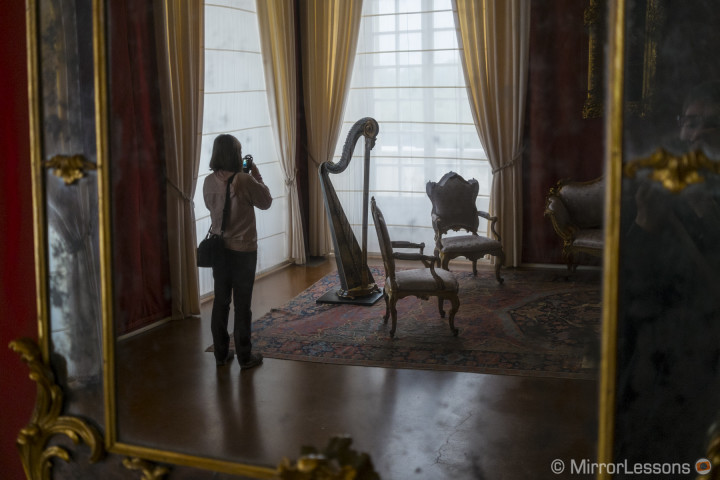
The X-Trans sensor really stands out when it comes to the features I listed above. It is the “least digital” sensor you can find on the market today and that’s one of the main reasons Fujifilm X cameras have conquered the hearts of so many photographers. Its closeness to film gives you warm colours, as well as a vibrant and delicate tonal range. If you are used to other digital cameras, including high-end DSLRs, you will notice the difference especially in the green, yellow and orange colours. Not that other digital cameras aren’t great concerning colours, but Fuji’s are different; they are unique.

The camera also offers great dynamic range and you will notice it especially when you work with the RAF (Fuji’s Raw) files. One of the key differences is how much detail you manage to recover in highlights, despite not being a full-frame sensor. This is another characteristic that pushes this camera a step further toward film. Digital has always been stronger with shadows, while film is stronger with highlights. The X-trans sensor you find on the X-M1 manages to create a good balance between these two characteristics.
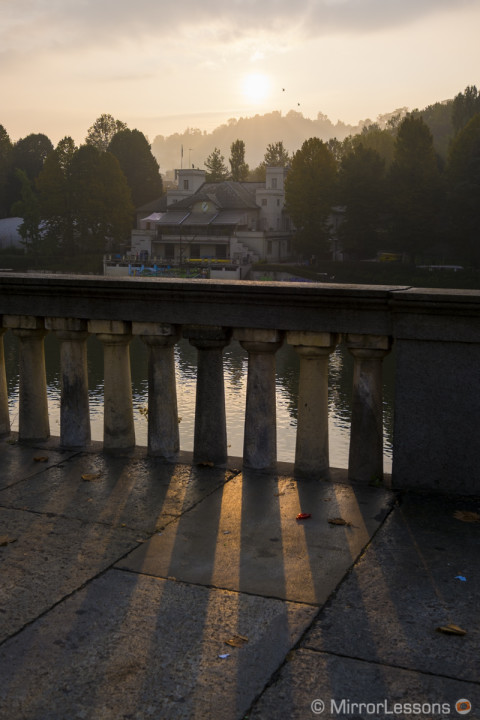

Finally, the film-like rendering of the X-M1 and its sensor is also a benefit for high ISO performance. Despite not having an optical low-pass filter, the X-trans sensor with its unique anatomy delivers clean images up to 3200 ISO, and even beyond the noise remains pleasant and more “organic” while retaining sharpness. I never worried about using the X-Pro1 at 6400 ISO and I often leave ISO to auto and let the camera decide for me. So when I picked up the X-M1, I naturally had the same approach. The noise you can see at high ISO levels is less invasive than other digital sensors. You can really use this camera at 6400 ISO without feeling concerned about image quality.
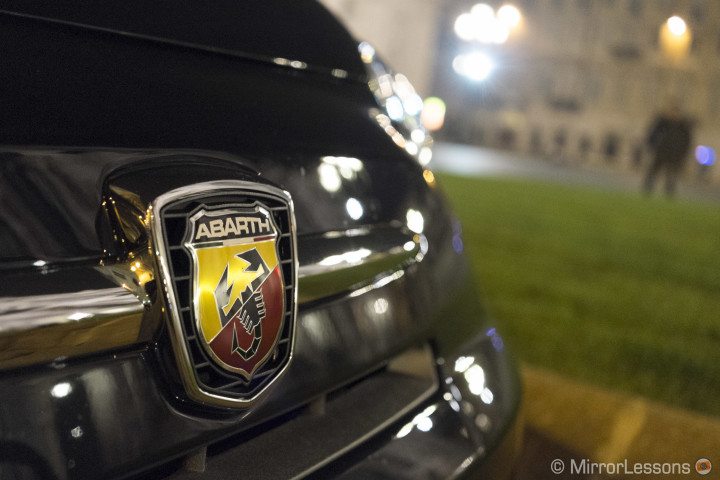
The cameras also has an extended 12800 and 25600 ISO which are available in JPG only. Talking about JPGs, the X line is also known for its high quality JPG engine. I often use the native JPGs from the camera as I love the unique colour rendering of the film simulation modes. If you don’t like to spend time working your photos on the computer, you can shoot in JPG only, find the optimal settings that the Q menu has to offer (sharpness, dynamic range, shadows, highlights) and capture perfect results on camera. That happens to me a lot with the X100s, which is currently the one X camera I own. I took the time to try different settings and find the ones that suited me best – I loved the results I got. You can do the same thing with the X-M1.
Below, an example with the monochrome filters. All JPGs on camera.
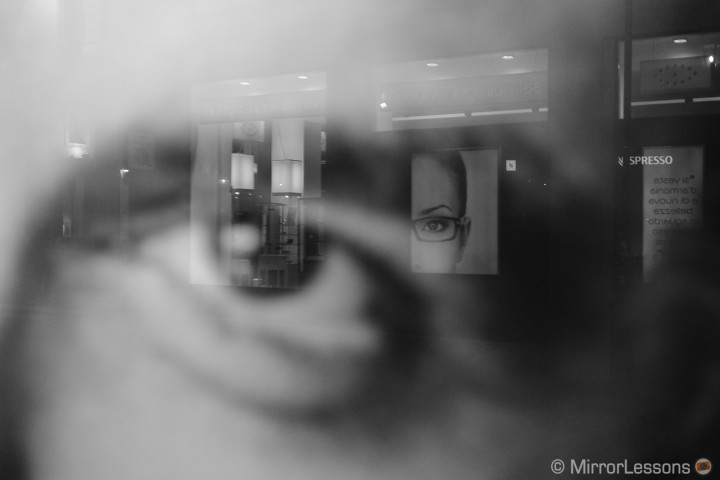
The only little downside, if we want to find one with this camera, is that there are fewer film simulation modes (Fuji’s pictures profiles). You will get Provia (standard), Velvia and Astia (my favourites), but only one basic monochrome filter and one sepia filter, while on the X-Pro you have several monochrome filters and pro negative filters. I guess the X-M1 had to lose something since it is a lower-end model. Another example is the inability to manually change the Kelvin degrees for white balance, not that this is really important as you will probably end up working with auto white balance only anyway.
Ergonomics, design and functionality
Ease-of-use at its best
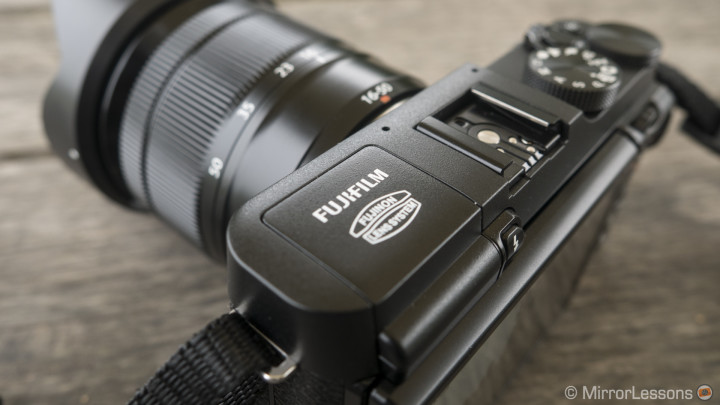
The difference between the X-M1 and the other X cameras, as well as the position of the X-M1 on the MILC (Mirrorless Interchangeable Lens Camera) market mainly lies in the design of the camera.
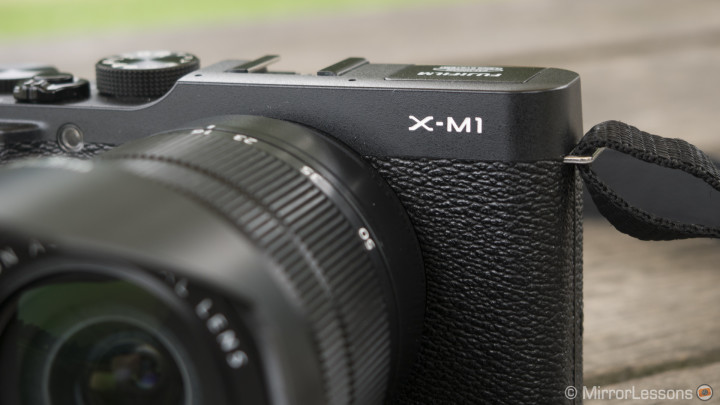
The X-M1 retains the retro look that is so appreciated in Fujifilm’s cameras. Somehow I feel it is a fusion of the X-E1 and X20 design. But being used to carrying an X100s or an X20, the first thing that makes a big difference is the build: it is plastic, all around. Only a few dials are metal. Now, there isn’t anything wrong with that as the build is solid and plastic also means less weight. But this is without a doubt the first sign that it is a cheaper camera. Also, plastic may not look as good for every body colour available. The model I tested was all black so it wasn’t a big deal but I wonder if the painted silver/brown version will lose some of its colour after extensive use. Only time will tell.
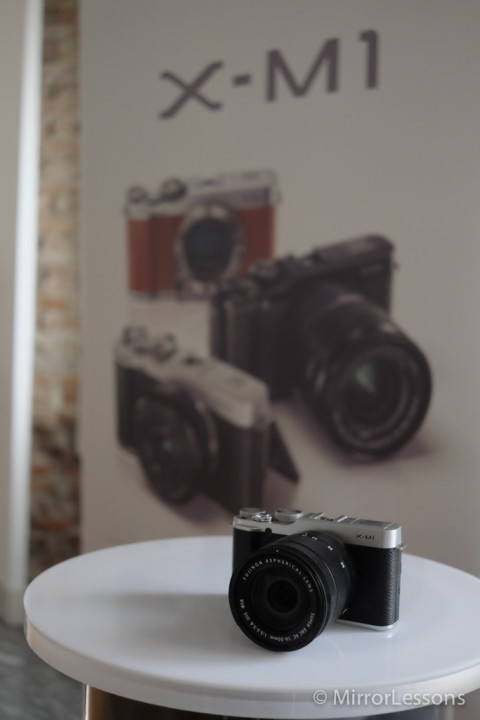
Concerning the ergonomics, the camera is slightly smaller than the X-E1. A lot will also depends on the lens you use. Personally and for many reasons, I found the X-M1 and 27mm f/2.8 pancake combo a joy to use. I will talk later on about the quality of this little lens, but mounted on the X-M1, it keeps the overall size compact and very portable.
The camera is nice to hold, and you find several buttons you are used to having on other X models, like the Q menu that brings together all the main settings of the camera. Of course, a big difference between it and its big brothers is the presence of a classic mode dial you find on common digital cameras.
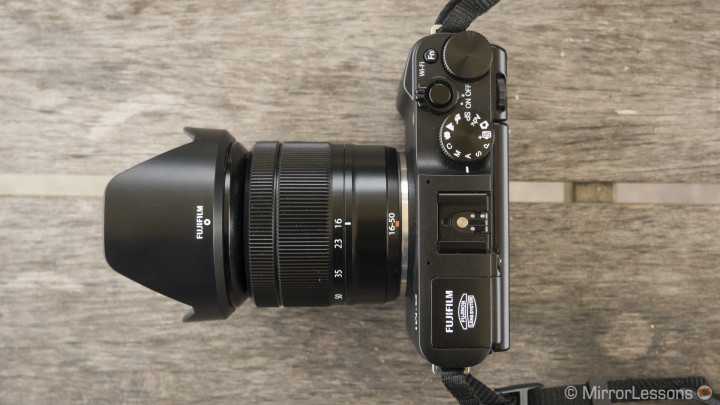
At the extreme top right, there is a second dial that is used for shutter speed. Between the two, you’ll find the on/off switch with the shutter release button. The dials are nice to use and very smooth. I only found the on/off switch a little bit hard to move, but it is a minor flaw. On top, you also have a Fn (function) button.
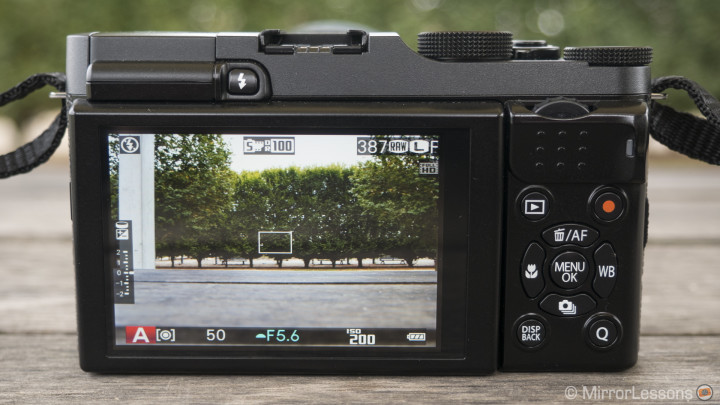
On the rear, there is a new addition, a dedicated movie recording button. You will also find the arrow pad, the playback button, Q and display button. You will also notice at the top right a second vertical dial that surfaces from the body. You use it to change aperture for Fujinon lenses that don’t have an aperture ring. Personally, this is the only dial I didn’t like. I find the position and orientation uncomfortable. Since I prefer to work in Aperture priority mode, I would have preferred to be able to customise this dial and the shutter speed dial and invert their functions.
On the rear, you will find on the top left the built-in flash release button and the LCD screen below, that can be tilted, making it easier to use. The LCD has good resolution and also feels very robust when you tilt it. Actually, I found it to be the most robust part of the camera.
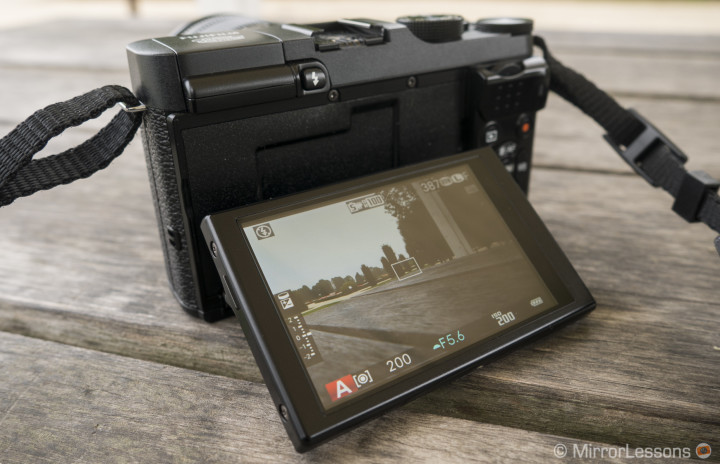
Using the LCD in broad daylight is fine. Like every LCD screen, you will still have a hard time in very brightly-lit situations. In the menu, you have the option of activating the “Sunlight mode” that will boost the brightness of the screen. I personally don’t like it because it gives you an incorrect preview of your pictures. The scene looks more saturated and contrasted than it actually is. So use it only in extreme situations; otherwise you can increase the brightness of the LCD screen using the Q menu. I often found this solution better.
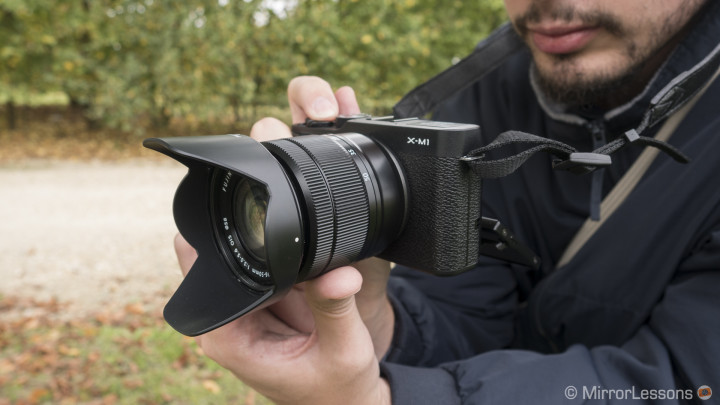
I must credit Fujifilm for the easy-to-use design of this camera.
The X-Pro/X100s have shutter speed dials and an aperture ring (on dedicated lenses), which brings photography back to the basics. The X-M1 retains the same philosophy; it is extremely simple and straight forward. You just need to get familiar with the dials, tweak some of the Q settings to find the look you prefer and that’s it. You could easily forget RAW, post-processing and a lot of other things. I’m glad that a lower end model manages to keep one of Fuji’s most valuable characteristics.
Autofocus and performance
AF is still Fuji’s weak spot
Unfortunately, when it comes to speed, Fuji cameras are still behind the competition. Fujifilm is showing great devotion in enhancing its products with firmware updates. The version nb.3 that came out recently for the X-Pro/X-E1 as well as many lenses was a true improvement in that sense. The problem with autofocus on Fuji cameras is that you still can’t trust it completely.
The camera has five different focus modes with 49 focus points but I always end up using Area AF (AF-S). Most of the time, the X-M1 did fine, especially in good lighting, but that is something you can expect from any camera.
I tested the autofocus in low light by having a walk around the city at night and I must say that it almost never failed. So that led me to think that it has been improved.
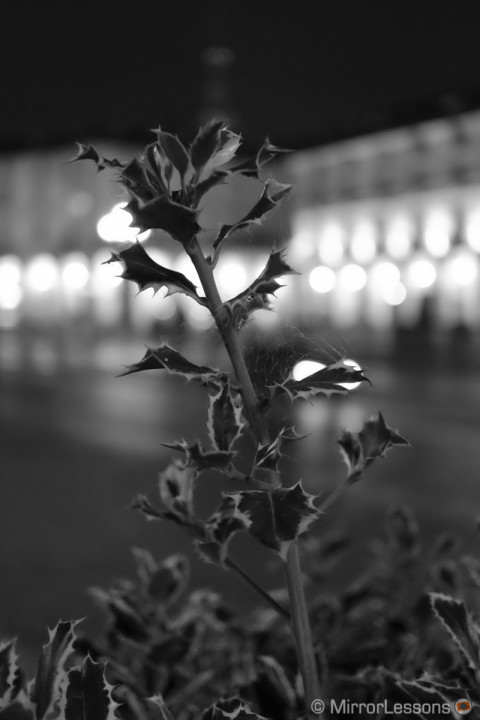
Then there were those situations where the camera just refused to focus. One good example is that of a coffee cup I shot in a bar. I tried to focus by using the contrast between the brown colour of the coffee and the white colour of the mug, but the camera refused to lock on. Moving the camera backwards didn’t help either; I had to move the focus point to the plate texture design to finally get the green rectangle confirmation. I noticed that most of the time, the camera had trouble with close subjects, and I’m not necessarily talking about macro shots. It is something that I have experienced with all Fuji X cameras so far.
Also, the reactiveness of the autofocus can be slow if for example you change your focus point from background to foreground. Of course it depends on the light and the texture of whatever you are trying to focus on.
Now, this doesn’t have to put people off buying this camera. Like I said, most of the time it will work fine. I took a lot of shots with the X-M1 and only a few really gave me trouble in terms of AF. But since I have to be honest in my reviews, I also have to write that there are much faster cameras out there. Fuji knows that and as such, introduced phase detection AF with the X100s, but even so, the AF is still behind the competition. I really hope that the soon-to-be-announced X-E2 will show some improvements.
The camera is also slow for some operations like for example when it goes into stand-by mode. You press and hold the shutter button to reactivate it, but it takes a long time before you can shoot. Fuji claims the camera reactivates in 0.5 second, but it seemed more than that to me (1 second if not more).
But if speed isn’t its strongest aspect, the metering system and the auto white balance are very accurate. I always worked in Aperture priority and AutoWB and I was always satisfied by the exposure indicated on the screen and the precise results I got.
Talking about battery power, the X-M1 battery has a similar longevity to the Fuji X-Pro1 and X-E1. If you plan to use it extensively, a second battery might be a good idea. By the way, the battery is the same as that of the X-Pro1/X-E1.
Regarding continuos shooting, the X-M1 has a burst of 5.6 fps but a limited buffer (only ten pictures with RAW).
Other features
Wifi, multiple exposure, advanced filters and video mode
The extra features you get with this camera aren’t as interesting. Not only but Fujifilm didn’t include them all. The motion panorama mode is missing, which is surprising as I consider it more of an amateur feature than a pro feature. With the X-M1, you get a multiple exposure mode, where the camera blends two different pictures with 50% opacity. The nice thing is that it works with RAW as well, while usually this kind of feature can be used with JPG only. You also have the advanced filters which will render your JPGs with special effects such as miniature mode, vignetting and other styles. I never use these functions on any camera, and the X-M1 wasn’t an exception.

New to Fuji cameras is the built-in WiFi that enables you to transfer pictures directly to a smartphone or tablet using the dedicated Fujifilm Camera App. Like any other WiFi enabled camera, I found this extra feature interesting but my guess is that you’ll end up using it only a couple of times. The main reason is that it is a multiple step process. You have to select your picture on the camera first, activate the WiFi, choose the camera network on your smart device, open the app and finally transfer the picture. And the reason you probably want to do this is to share a picture, which adds an extra step to the whole operation. Moreover, the Fujifilm app is limited. You can basically transfer only one picture at the time by selecting it from the camera. You cannot control the camera in shooting mode.
I didn’t even try the video function. It has the same quality as the other Fuji X cameras (meaning not great), works only in auto mode (you cannot control anything manually) and doesn’t have a European PAL frame rate.
Do I miss the viewfinder?
A serious point of contention
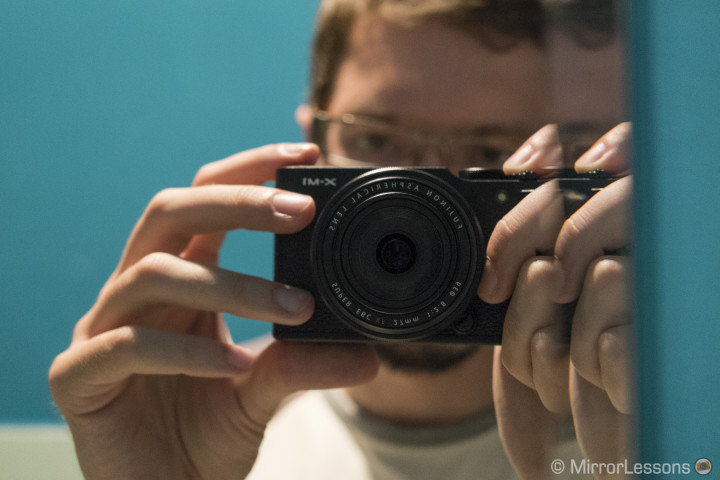
I personally always miss having a viewfinder, so my straight answer is yes. The LCD is comfortable in some situations, I’ll give you that, but a viewfinder is always better for creating a precise composition. The X-M1 doesn’t have one and there isn’t an optional EVF you can mount on the hot-shoe. Fujifilm has been really clear about this – the X-M1 is meant to be used with the LCD only.
The XC 16-50mm f/3.5-5.6 OIS and XF 27mm f/2.8 lenses
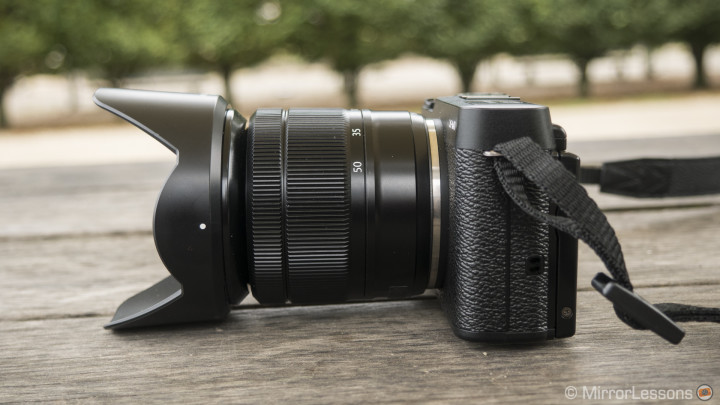
The kit lens for the X-M1 is the first in a cheaper lens series called XC. They will all lack an aperture ring. The 16-50mm acts as a standard kit lens but with a wider angle than usual (24mm equivalent in 35mm format). It also has internal stabilisation. It actually works well and you can see an example below.
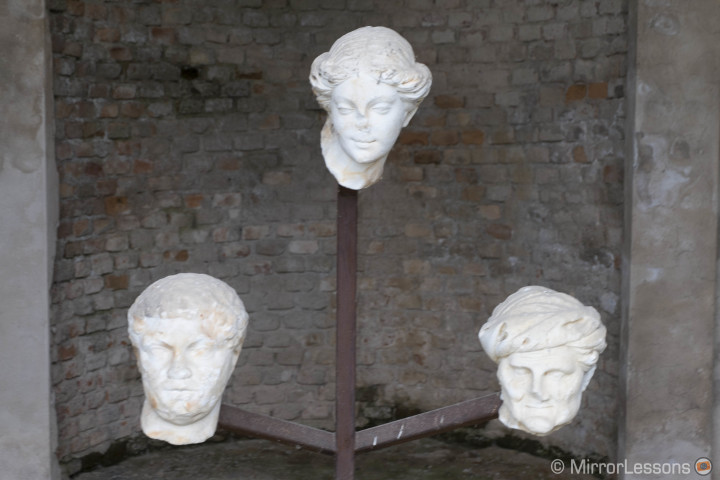
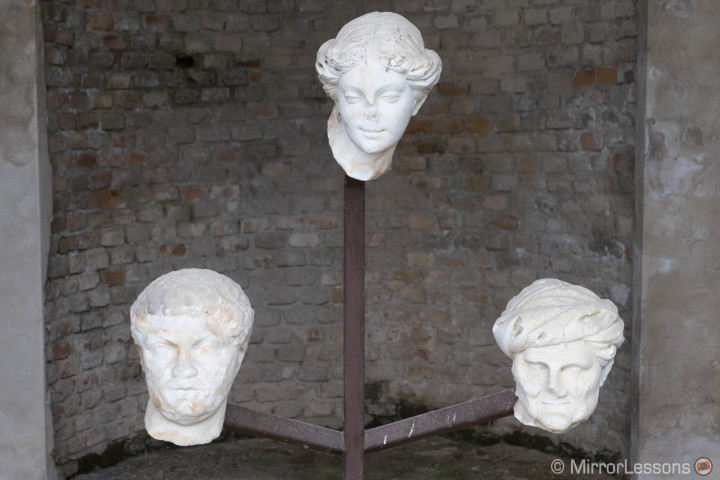
The lens of course isn’t fast and you will get an interesting bokeh only by focusing close to a subject.
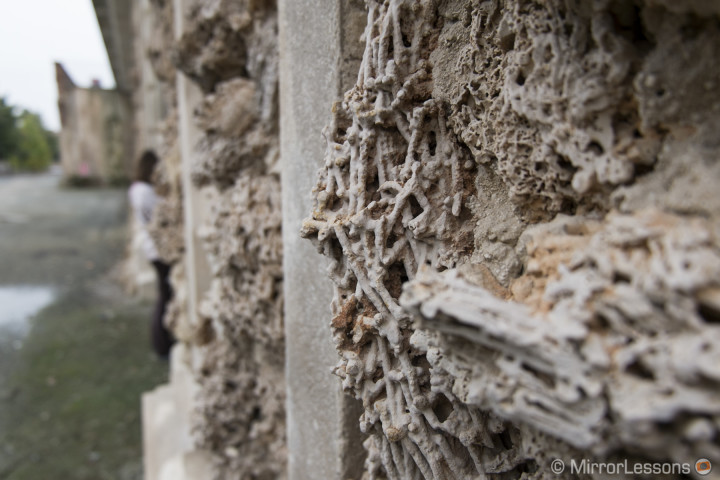
It also feels very cheap and has a plastic mount, meaning that you have to be careful with it (but that applies to almost any kit lens).
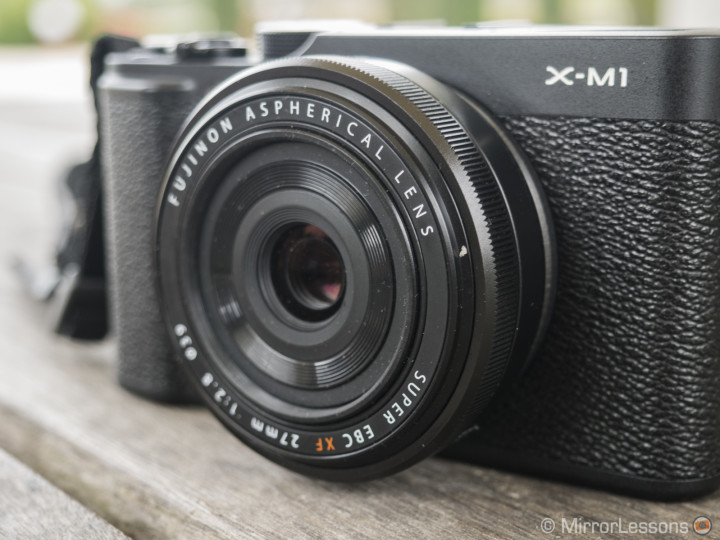
The 27mm on the other hand is a lens I almost fell in love with. If I currently owned an X-E1/X-Pro1 (and none X100s), I would definitely consider it for when I want to take the camera out with only one lens and keep the combo as compact and portable as possible. It has a 41mm equivalent, which is unusual (between 35 and 50mm) but it is actually very interesting to use. It also has a nice bokeh when used wide open and doesn’t lose any sharpness. Overall, it is a very good lens but a little bit expensive (around $450).
Conclusion
The Fujifilm X-M1 is a very nice product but I found it less attractive than other Fuji X cameras for many reasons. First, as I’m writing this, the X-E2 is about to be announced, meaning that the price of the X-E1 will drop. The X-E1 is the same camera as the X-M1 but with a viewfinder and higher quality build. It is true that you will probably end up spending $100 more (body only) or $200 if you include the kit lens but in my opinion it is worth it and the kit lens you have (18-55 f/2.8-4) with the X-E1 is a better lens.
Many pointed out that it is a perfect second body for those who already own an X-Pro or X-E1 but I honestly find it difficult to imagine someone switching to the X-M1 on some occasions if they already own one of these two cameras. Not only is there the issue of price, but if compactness is what you are worried about, an X-E1 with the 27mm 2.8 will still be very compact. And since the 27mm doesn’t come with the X-M1 package, there isn’t really the possibility to save money either.
Personally, if price and compactness matter, I would pair an X-E1 or X-Pro1 with the Fuji X20. Yes, the sensor is smaller, but the camera still does a great job in most situations. It has a faster AF and it suits the definition of compact and portable better than any other Fuji model.
So who is this camera for?
I would recommend the X-M1 to budget-concerned amateurs and advanced amateurs who want to enter the Fuji X world but don’t care about having a viewfinder. It is meant for those who want a camera that
- a) has a simple design that resembles other Fuji X models on the market
- b) provides the great image quality of the X-Trans sensor
- c) doesn’t necessarily have a super fast AF.
And the X-M1, in this regard, is probably the best in its category despite the slightly high price tag.
 What I liked about the Fujifilm X-M1:
What I liked about the Fujifilm X-M1:
- Superb image quality
- Film-like color rendering
- Great high ISO performance
- Ease of use
 What I don’t like about the Fujifilm X-M1:
What I don’t like about the Fujifilm X-M1:
- Slow AF
- Slow recovery from stand-by mode
- WiFi function is limited
